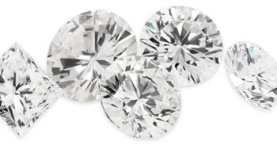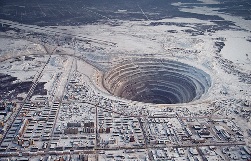 You love the look of diamonds, but want a more environmentally and socially responsible alternative to a unknown origin mined diamond- enter eco diamonds. This phrase can be thrown around loosely, so the first and foremost thing to do when looking for an eco diamond is do your research!
You love the look of diamonds, but want a more environmentally and socially responsible alternative to a unknown origin mined diamond- enter eco diamonds. This phrase can be thrown around loosely, so the first and foremost thing to do when looking for an eco diamond is do your research!
Lets first dive into some of the terminology, pros and cons and what is available as eco jewelry.
1. Pre-owned diamondsIf you have some diamonds in your family (grandmothers ring, jewelry, etc), use them! Stones can be easily re-set into new rings, or jewelry. Beware of stores selling pre-owned diamonds as these can often be a way to get un-tracked blood diamonds out onto the market.
2. Cultured or Synthetic Diamonds
These are laboratory created diamonds. Don’t confuse these with diamond stimulants such as cubic zirconiums, these are real true diamonds with the exact molecular structure of mined diamonds. These are often totally flawless, so you can usually get a better diamond at a better price, without the environmental destruction.
3. Environmentally and Socially conscious mined diamonds
Now beginning to emerge are several types and variations of Eco mined diamonds. While many will argue the ‘Eco’ part since mining is so destructive, it can be much less harmful than traditional mining techniques. Canada has begun mining and selling eco diamonds, and some smaller operations in Africa have begun integrating environmental and social ethics.


Eco friendly diamonds don’t really exist. By their very nature, they are products of an energy intense process, whether they are mined or created in a lab. Mining is a very destructive process, and while there are relatively less destructive operations in comparison, being ‘less destructive’ doesn’t disqualify it from being destructive. Lab created diamonds are far less destructive to the environment, but still use a lot of energy to produce.
Environmentally responsible diamonds are from mines following environmental best practices to prevent water contamination, habitat impacts to surrounding areas, mitigate for habitat destruction and involve mine cleanup and restoration upon the closing of operation. This can be very difficult to regulate and monitor, even in first world countries such as Canada where the powerful industry interests can influence policy and politics.
This may leave you wondering what to do. The best thing you can do is talk to your jeweler and obtain certificate of origin paperwork for your diamonds. Ask questions and feel comfortable with the process and know that since the process isn’t perfect, you may still end up with a conflict (blood) diamond, it’s just the risk you take. In the discussion with your jeweler, you may be presented with materials about the Kimberly Process.
The Kimberly Process is a great idea, but is very seldom ever followed up by government, industry or consumers. Since it is only voluntary self-regulation, there is no legal consequence for violating or ignoring the process protocol. Import/export loopholes, bribes, document forging and misrepresentation leave this to be nothing more than an industry marketing technique for consumers to believe they have bought a conflict-free diamond. Even when requesting the proper documentation, one has no idea if the documents are real or represent the true movements of the diamond. Beware of jewelers ‘talk’ of the process without providing any documents or certifications.
Comments 4
Great article. I agree that you have to be careful buying used diamonds, because it can be very hard to guarantee the origin. I also feel that the “conflict free” label used to describe diamonds from parts of Canada is misleading.
Diamonds from the Canada and the Artic are often steeped in conflict because many local residents are not eager to give up their pristine wilderness to be replaced by diamond mines.
At Eco Diamond®, our lab created diamonds are created using renewable energy and distributed using sustainable methods. I feel that synthetic diamonds represent the most eco-friendly diamond option available today. What do others think?
Good post….thank you for talking about more than just conflict-free diamonds.
Jason – Genuine, lab-created diamonds do indeed have a smaller carbon footprint than their mined counterparts and are therefore more eco-friendly. However, by buying lab-created, you aren’t helping to reform the industry and aren’t helping those in the poorest countries on earth who need diamonds to survive.
At C5 company, we offer both lab-created and ethically sourced mined diamonds. Neither one is an answer in and of itself. Rather, they are both part of the solution for now.
I can’t imagine not reusing diamonds, especially if you have good stones. You can create an entirely new piece of jewellery.
Pingback: Ethically Sourced Wedding | The Chic Ecologist